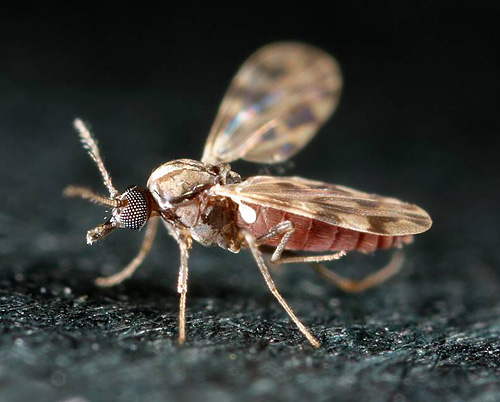Bugs' lives modelled for security purposes
 A new tool will track and manage the millions of disease-carrying bugs which use cyclones and strong winds as a cover to invade our borders every year.
A new tool will track and manage the millions of disease-carrying bugs which use cyclones and strong winds as a cover to invade our borders every year.
Australian researchers are developing the new software and modelling tool to get a vector on the risks associated with wind-assisted migration of species like Culicoides, a biting midge that carries a disease called Bluetongue virus.
The bug radar is one of several projects to be developed as part of the CSIRO’s new Biosecurity Flagship launched in Canberra over the weekend.
Gary Fitt, Director of the CSIRO Biosecurity Flagship says they will focus on the Bluetongue-spreading Culicoides because it is a major risk in Australia, and will be a good test for the program. Mr Fitt says: “The appearance of some strains of Culicoides can only be explained by wind-borne movement and we know of a number of other insects that are detected across northern Australia after cyclones...That’s part of the reason why one of our projects is to develop a model to help predict wind-assisted arrivals of insects or plant pathogens into northern Australia, or in fact into any part of Australia. With the same models, we can then predict where these organisms might spread and also use the model in reverse mode to backtrack where they may have came from. That helps us better understand how to prepare for and manage an outbreak.”
The potential spread of the Bluetongue virus is just one major biosecurity issue faced by authorities in Australia, with dozens of new diseases flying in on the back of bugs from around the world. Dr Fitt said CSIRO’s Biosecurity Flagship will develop new ways of reducing the spread of infectious disease-carrying pests before they decimate any of the nation’s valuable natural resources.







 Print
Print